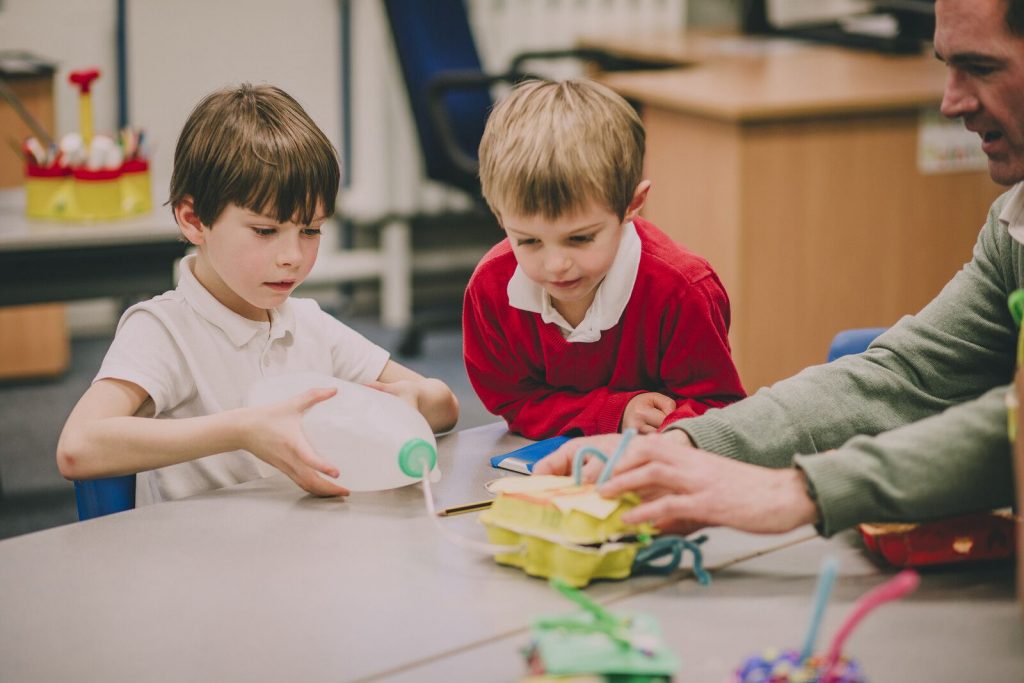When my September classroom supplies arrive, I inevitably feel environmental guilt. The markers, paint bottles, glue sticks, and packaging are a sea of plastic. I always tell myself, “I’ll do a better job next year,” but never follow through. With the additional waste seen due to the pandemic, like hand sanitizer bottles, reducing and reusing seems even more pressing, so here’s my plan to act.
STEP 1 – Buy less.
Before even clicking on the consumable catalogue, I plan to take a complete inventory of my cupboards and check with other teachers to see if there are any items they don’t plan on using. Some school boards have consumable recycling programs. Durham District School Board runs the RE: Source Depot, where educators can pick up free reused or repurposed materials.
With a list of exactly what I have and what I need, I won’t let myself browse the consumable catalogue. I’ll think of it as a visit to the grocery store, going on a full stomach so that I’m not tempted to buy more food than I need!
STEP 2 – Choose supplies wisely.
To help me choose environmentally friendly supplies, I’ve researched various companies. The Ultimate Green Store carries recycled rubber erasers, recycled newspaper pencils and pens made from re-used water bottles. Green Toys makes house playsets, stacking cups and toy cars out of recycled plastic containers like milk jugs. The toys are made from 100% re-used materials, plus they ship without using blister packs or cell phone wrapping.
These stores are located in the United States but deliver to Canada. It will be more expensive than school board consumable sites, but hopefully, boards will start seeing the benefits of buying from other sources or adding
“green” items to their current inventory.
STEP 3 – Create my own and make alternate purchases.
Last year, instead of having students store their shoes in plastic baskets, I collected shoeboxes from stores. I covered the front with construction paper, students decorated them, and the boxes were sturdier than dollar store plastic bins.
Dollar store mailbags are another item that can be replaced. The Wikihow site “Choose Eco-Friendly School Supplies” suggests making your own at home. They have step-by-step instructions for pencil cases. To get the correct pattern for a mailbag, you can disassemble a dollar store one and use it to trace on fabric. If students are old enough, they can even help trace and cut out the patterns. www.wikihow.com/Make-a-Pencil-Bag.
For alternate purchases, I’ll be giving up glue sticks this September. I’m not the biggest fan of white glue, but the refillable containers reduce plastic waste considerably.
STEP 4 – Recycle and reuse what can’t be reduced.
There are some businesses with recycling programs for high waste supplies that can’t be avoided. Staples collects whiteboard markers, highlighters, and Sharpies, which they then pass on to TerraCycle. TerraCycle’s website explains their recycling process and provides a downloadable “DYI Collection Bin Kit.”
Markers and empty glue sticks can also be kept as 3-D math manipulatives or used for craft projects like a Glue Stick Character. The organization Artists Helping Children has step-by-step instructions for this craft on their activities blog.
STEP 5 – Encourage school boards to order in an eco-friendly way.
Unfortunately, I have seen massive waste in some schools. In one case, desks and storage cabinets were thrown out because there was no space to store extras. We can lobby boards to start programs like the DDSB’s Re: Source Depot for larger items like desks.
Hand sanitizer bottles are also a massive contributor to landfills. It’s an important time to encourage boards to reduce this waste by, for example, buying large quantities of sanitizer and re-filling bottles instead of throwing them out each time.
How to start?
With all the pressure educators are currently feeling, it’s hard to find the time and energy to make and encourage change in purchasing. It’s important to remember that we can fold this into our curriculum. Taking inventory of class supplies would be a great class (or school) project, with students deciding how to categorize and count materials. Researching companies that produce sustainable materials and writing proposals on how schools can cut back on waste is also a wonderful learning opportunity. Reducing the environmental footprint of our classrooms and schools seems like a big feat, but with our students’ help, energy, and creativity, we can start making it happen.
Christina Heyding
Christina Heyding, B.Ed. (OISE), B.A. (McGill), GrDip Journalism (Concordia) is a Grade 1/2 French Immersion Teacher with the Toronto District School Board. She has written for publications like The Toronto Star and has published a children’s book The Misfits of Christmas (Les décorations au coeur brisé).
This article is featured in Canadian Teacher Magazine’s Fall 2022 issue.

